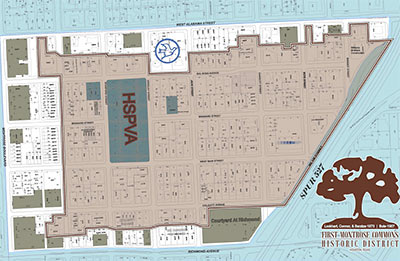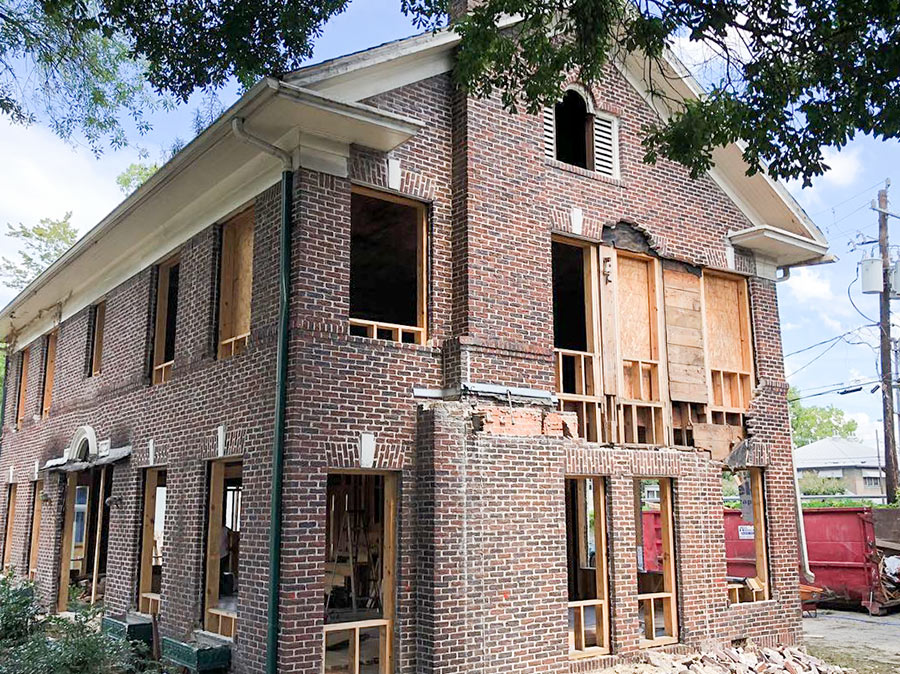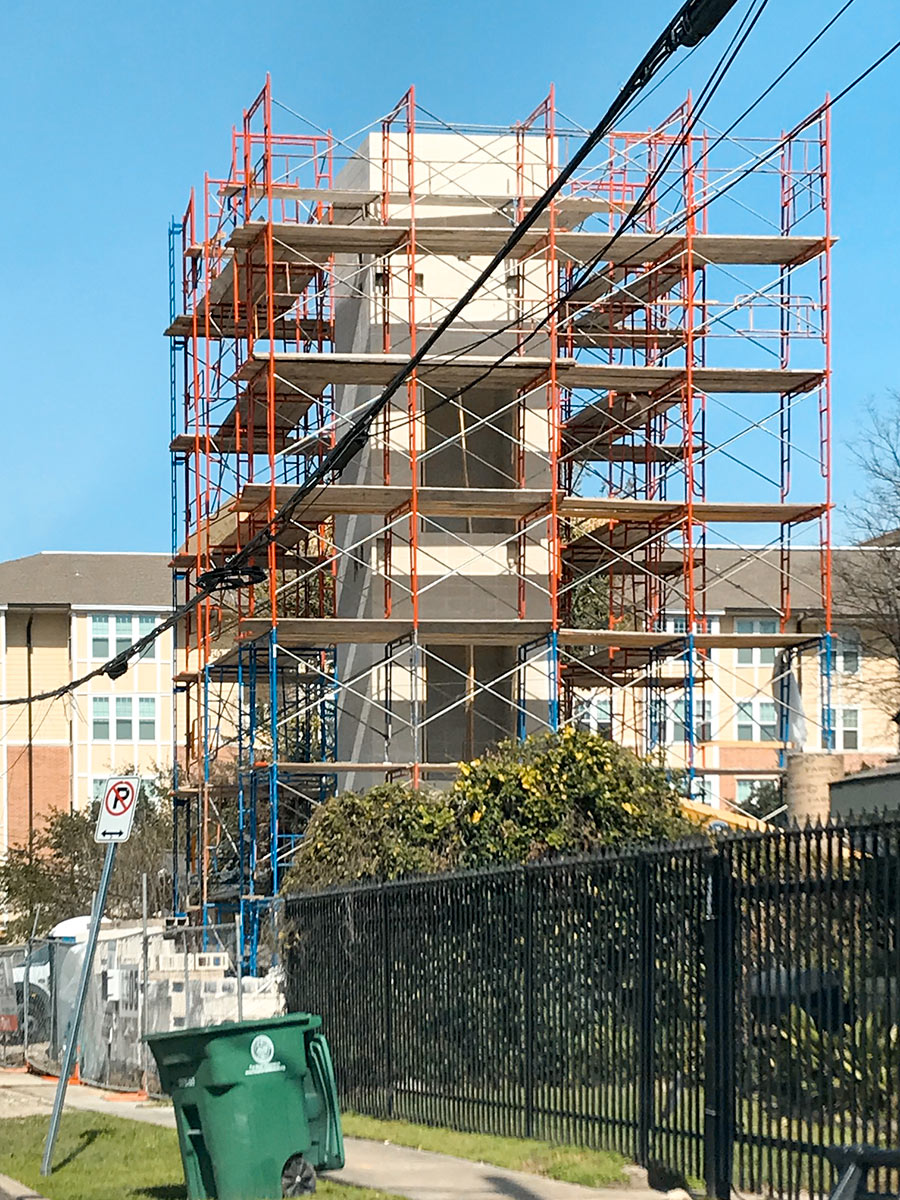
City officials have informed the president of the First Montrose Commons neighborhood association that the recent historic-district reconsideration survey of residents has fallen “well short” of the 51 percent needed to dissolve the district. Under the terms of the recently revised preservation ordinance, city council could still vote to shrink the size of the district — which fits between Richmond and West Alabama just west of Spur 527 in Montrose — in order to exclude some properties whose owners favored repeal. But association president Jason Ginsburg considers that unlikely: “A brief review of the repeal surveys that were returned shows that most of the dissenting property owners are sprinkled throughout our historic district, as opposed to being clustered in one particular area,” he wrote in a post on the FMC website last night. First Montrose Commons became the 16th historic district just last year.
- FMC Historic District Saved! [First Montrose Commons Neighborhood Association]
- Previously on Swamplot: How Houston’s Historic Districts Could Still Shrink, The Next New Historic District: First Montrose Commons, High School Rules: HSPVA and First Montrose Commons’s Historic Decision





I have two properties in FMC and one just carved out of it’s border. My guess is the people that were against the historical district were those that have had the “pleasure” of dealing with the city before.
.
Once you see how ridiculous some of their policies are, the idea that they’ll have even more control over what you do is scary to say the least.
Quick! Sell and get out while you have a chance.
tcp: While I know your comment was more of a jab than a suggestion, if you were being serious then the same reason I would have to sell would be the same reason someone wouldn’t want to buy.
.
Thus your comment/suggestion just comes across as silly.
.
Regardless… My stuff in FMC are income properties anyway. While such rules may effect land and resale value, they don’t change income/expense numbers. The exception would be repairs and upgrades to exteriors of the buildings, which is way more work (dealing with the city) than it’s worth in return.
.
I can’t say it enough: It’s my view that all these rules do the opposit of their intent. They keep run down or vacant/abondoned buildings in their current condition because no one wants to deal with the city.
.
My personal home is in the Westmoreland subdivision right across from FMC. Across the street from me is an old early 1900s single family that’s been vacant for 10 (?) years. It’s falling down. Knowing what I know about working with the city, that building will stay like that for many years to come. Sad.
Congratulations to First Montrose Commons, and all who worked so hard to preserve this worthy neighborhood as a historic district!
Weeks after the Heights West failed to repeal (getting a meager 20% after a well funded realtor lead campaign), a crudy old rental on W 14 and Tulane sold as is now being completely renovated. So much for doomsday.
Way to go Montrose. Congradulations on your historic district.
Congratulations. oops.
Phew, it must be a relief to know that now your neighbors can only build a lot filling, sky blocking McMansion if it uses timber siding and is a camelback. That must be a huuge relief.
Old School: We can both come up with anecdotal evidence of the effects of the historic district. Again, I was very much for it. Hell, I own a historic home and like my ‘historic home’ neighbors.
.
My fear comes from dealing with the city and the fear that it’ll only get harder to do so. I’ve bought a lot of run down beat up places in Montrose (the ones everyone complains about) and worked to make them better. EACH TIME I’ve had negative run ins with the city that have made me question why I bother. I’m not asking for a medal, city help, or a pat on the back. Just leave me the hell alone so I can do what I do.
.
I’m currently “begging” the city to release some old order on a building I bought last week that’s been boarded up for 10 years. I can’t pull permits to do work till the order is lifted, and I can’t do the work required to lift the old (no longer applicable) order till I get permits. Once I’m finally approved to start work (oh thank you gracious city overlords) then I get to spend over a thousand bucks for some other BS paperwork tied to the old order.
.
Yes, let’s give these same people that write and enforce these policies MORE POWER. Sounds like a GREAT idea.
My comment was meant as silly. I’m glad you noticed.
I work with the city on projects everyday. Sometimes it’s frustrating, yes, but the rewards I receive on projects well done satisfy me or I wouldn’t continue. Processing permits through this city, whether properties are encumbered or not, are light years easier than doing the same in New York, W. Hollywood, or Chicago.
Perhaps you should reconsider (your) choice of work locations if you want to be left the hell alone.
well, with customer service like that who could argue with him.
Getting 50% of neighborhood to do anything would be nearly impossible. The most rediculous voting/reconsidering process I’ve ever seen. If the support is as strong as implied, why not a straight vote?
REALLY…. you should reconsider your choice of work and location and then you might just get that medal.
Chris: Luckily my line of work (or source of income) is in partnership with my own personal goals of having a better neighborhood to live in.
.
I just happen to find irony in statements from people that think the city and more rules/regulation are the path to happiness and improved communities when (at least in my experience) it’s 100% the opposite.
.
“armchair activism” doesn’t turn around a bad property.
“Don’t blame me. I didn’t vote for her.”
“From Old school:
Weeks after the Heights West failed to repeal (getting a meager 20% after a well funded realtor lead campaign), a crudy old rental on W 14 and Tulane sold as is now being completely renovated. So much for doomsday.”
This sounds like you are perpetuating the myth that realtors funded the opposition. I assure you that they did not. The “well funded campaign” was funded by the homeowners who made donations by homeowners to a realtor led group, to be completely accurate. The real well funded campaign was from the civic associations who sold historic districts to their communities based on a 90-day waiver knowing the ultimate objective was to remove that 90-day waiver. The othe well funded campaign came from the City and the Mayor, and both spent far more money than the realtor led opposition. The City had an unlimited budget and the Mayor used her campaign funds. Hundreds of hours of the city’s planning department staff time were expended on the HPO effort, and their salaries are paid by our tax dollars. The opposition effort was completely volunteer, while thousands of dollars were received in donations from property owners, the really deep pockets on this issue came by way of the city, our tax dollars and the Annise Parker campaign fund.
Can someone explain factually what the pros and cons are?
1. If you have an existing house in disrepair, which many of the Montrose houses are, is it better to let them run down or fix them?
2. Is the City planning on restoring the sidewalks back to the style of the original style, or are the homeowners required to do so?
3. How many homeowners can really afford this? Most people in the area can hardly afford their property taxes, much less maintain their houses and yards.
4. How does this affect the apartments in the area?
It would be nice to find out what the pros and cons are to this.
MS
To be fair neither side predicted any sort of immediate doomsday scenario resulting from this. The pro-historic district folks predicted that without protection their homes would gradually succumb to developers. The anti-historic district folks predicted that the ordianance would negatively impact their property values. Neither of these effects would have been immediate. It will be interesting however to compare neigboring areas in and out of the protected districts in a year or so and see what has really transpired.
It’s my understanding that once a sidewalk is installed, “normal” upkeep and repair is then the responsibility of the homeowner.
If a sidewalk is compromised BY the city while maintaining water mains etc, then the city will repair it. When a home is demolished as a result of FEMA buyout, the affected sidewalk where a driveway existed is repaired.
And here’s something that I think is weird:
The curb in front of your house is also your responsibility to maintain. A neighbor found this out when they made a request on 311 for street repair.